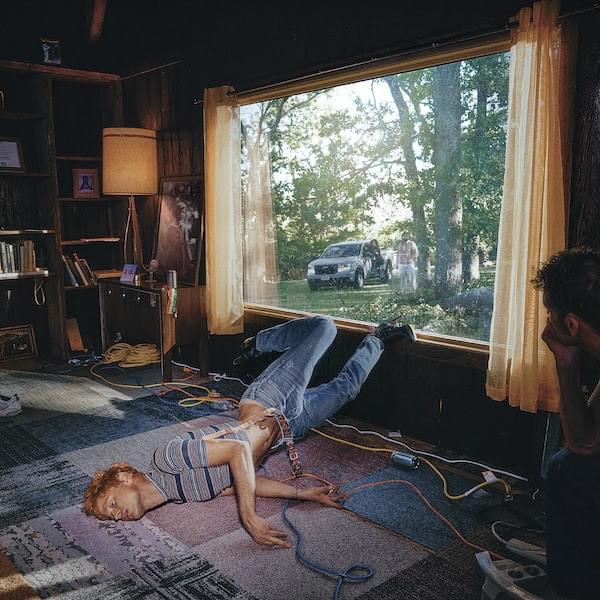A Year With Bowie [Part 5] – April
I hate dogs. If I had my way, each and every dog in this fair nation of ours would be rounded up and shipped to a little island of their own. There, they could merrily sniff each other’s backsides and I would never be bothered by them again. Don’t worry, if you have a dog, I would let you visit it. I am not that much of a Nazi. I would allow one boat a day to sail to the island (I haven’t thought of a name for dog island yet, so if you have any suggestions, let me know). Every dog would be tied to an incredibly long lead, fastened to a massive lamp-post at the harbour. So, to see the dog of your choice, you just pull on the relevant lead until that particular hound is snuffling round your feet. Easy.

After listening to Young Americans, I have now decided that we need a neighbouring island to round up the nations saxophones. In fact, I’ve got a better idea, lets melt all the saxophones down and make something entirely useless out of them, like a Spitfire, or a giant lamp-post for dog island. I could count on one-hand songs where I think the saxophone has enhanced the tracks rather than ruined it (* see below). None of those songs are on Young Americans.
I realise I am missing an album here, but I want to get the dross out of the way before I turn my attention to Diamond Dogs. To leave it in the middle of this months trio of albums is like a Twix with a turd between them. It features the worst version of the worst Beatles song, a definitive double whammy. Fame aside, there was nothing here to like (and I only like Fame a little bit), a sprawling mess of an album, the worst kind of indulgences. The title track is bad enough (first instance of a saxophone = 5 seconds), parping over the bumbling piano and Bowie’s nonsense, until Win, possibly as bad as it gets. I’ve come here to hear Bowie, but instead all I get are backing singers.
The problem I have with Young Americans is how Bowie just seems to be able to do whatever he wants. There doesn’t seem to be anyone pointing out to him, in his cocaine-addled state, that it is actually not very good. ‘Somebody Up There Likes Me’ and ‘Can You Hear Me’ (I am convinced he is singing “chicken and rice”) are rambling messes, not so much songs rather than exercises in endurance. If I had been a thrusting young popster in the 70′s, this would have been the point where me and Bowie would have parted company. I’d be pinning up Roxy Music posters in my bedroom by teatime. FACT.
“This ain’t rock and roll. This is…genocide!”

Diamond Dogs though is everything I want from a Bowie album – exciting, full of grand gestures, and ever so slightly mental. It opens with a stream of logical nonsense until bursting into the title track, choppy, clumsy guitar lines somehow making the song even more exhilarating against the curious, modulating vocal of the chorus. It is well documented that Bowie himself plays the majority of the guitar on this album, but what he lacks in the professionalism department is redeemed in the quality of the riffs. ‘Rebel Rebel’ in particular, despite its repetition and grade 1 drums is daring and enormous fun. It also contains one of the finest Bowie songs I have never heard. ‘Rock ‘n’ Roll With Me’ I adored, given the full, swaying with your arms round your friends treatment as Bowie passionately pours out the lyrics, pleading with the listener. However, whilst I appreciate these theatrics, I like less the vaudeville spirit of the remainder of the album. Diamond Dogs was originally destined to be a concept album based on Orwell’s 1984, until legal matters couldn’t be resolved. The songs that survive that concept sound destined for a stage show, and suffer as a consequence, sounding bloated and shrill. Nonetheless, this is a good album, full of solid songs such as ‘Sweet Thing’ and ‘We Are The Dead’. It belongs far more to the Bowie of Ziggy Stardust than the Bowie of Young Americans, for which we should be grateful.

And then Station to Station. Hugo Wilcken in his wonderful examination of Low (part of the highly recommended 33/3 series, who I will be pinching from liberally next month) calls it a “veritable epic”, whilst Brian Eno rather generously declares it “one of the great records of all time”. Bowie entered the studio with only two finished songs, in the grip of severe bouts of psychosis. His interviews of the time are that of a Messianic delusionist, declaring Hitler the first rock star and how strongly he believed in the UK’s need for fascism. It is around the time of the infamous “Victoria Station” incident, what Bowie insists was a misconstrued wave casting him in a bad light to say the least. The Thin White Duke was in trouble, crushed with fear and unable to cope with much emotionally. His portrayal of the character Thomas Jerome Newton in The Man Who Fell To Earth didn’t help much either, the link between Station to Station and what was to come reinforced by the shared cover image.
With this in mind, it’s a wonder he actually got anything done in the studio at all, bearing in mind how little he went in there with. Even more amazing is how little of this comes across on record – the odd lyric aside it hardly sounds like the recordings of a man in crisis. Golden Years is super smooth, everything Young American’s should have been, Bowie taking a groove and building a perfect melody over it. There is much more experimentation here also, evident in the Kraftwerk echoes on the title track, as the train pistons creak and fade into Earl Slick’s guitar. Wilcken calls it an “experimental groping towards sound as texture rather than chords and melody”, even if the rest of the album is more conventional that the 10 minute epic that opens it.
During ‘Word on a Wing’, Bowie pleads for attention, his own backing vocals sounding almost as if they are mocking the main vocalist. ‘TVC15′ manages to be both conventional and alternative at the same time, whereas ‘Stay’ cranks up the tension with some blistering guitar work (Bowie definitely benefiting from a hired hand as opposed to the DIY approach). The crowning glory though is ‘Wild Is The Wind’ – passionate, heartfelt, it is Bowie at his best, a staggering end to an under appreciated album.
December 1975 saw Bowie at work on a soundtrack album for The Man Who Fell To Earth, a project that would collapse, remaining unreleased to this day. The genesis for what was to come is said to lie in these sessions. The end of the 70′s saw Bowie in Berlin, which we will look at next time.
* For the record, these are:
The Cure – A Night Like This
Madness – Return of the Los Palmas Seven
Duran Duran – Union of the Snake
Hazel O’Connor – Will You
Soft Cell – Torch
Diamond Dogs 67%
Young Americans 15%
Station to Station 78%
Get the Best Fit take on the week in music direct to your inbox every Friday

Great Grandpa
Patience, Moonbeam

Deafheaven
Lonely People With Power

Perfume Genius
Glory





